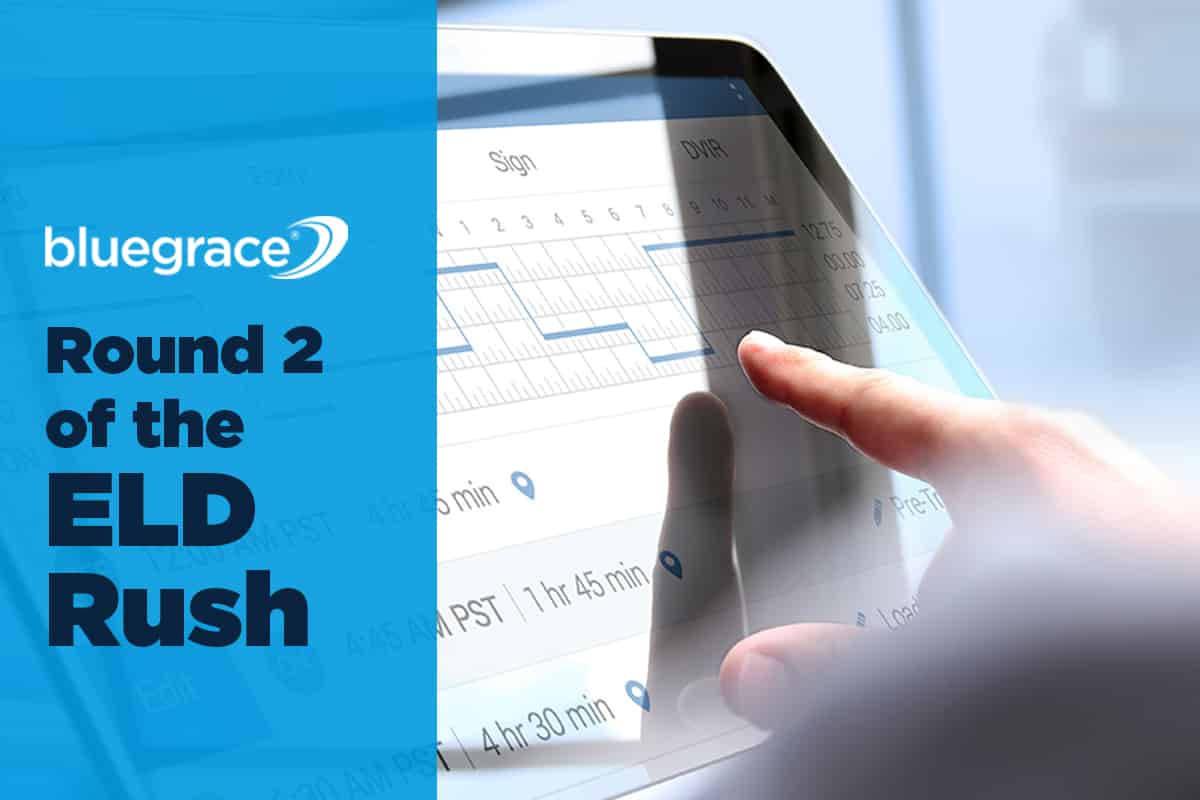

We could be seeing another speed bump in the road for trucking as we’ve just passed the Dec. 16 deadline for motor carriers and truck drivers to make the switch from automatic onboard recording devices (AOBRDs) to the federally mandated ELD or electronic logging device.
The AOBRDs were originally grandfathered into the ELD mandate back in 2017, but are currently being targeted for an upgrade. No one is quite sure just how many of the older systems are in play currently, let alone how many companies and drivers have made any progress towards the switch.
As ELD technology continues to evolve, the technological (and financial) gap between the two technologies continues to widen.
What complicates this issue is the growing complexity behind the switch from AOBRD to ELD. As ELD technology continues to evolve, the technological (and financial) gap between the two technologies continues to widen.
“The industry as a whole would have liked to transition earlier, but the providers didn’t have software ready at the time,” said Michael Owings, vice president of corporate services and support at less-than-truckload (LTL) carrier Southeastern Freight Lines.
And, to a certain extent, there are a number of carriers that are hesitant to make the change to the more exacting ELD. With AOBRDs it was easier to find logging loopholes in how you move a truck,” said Jeremy Stickling, chief administrative officer of truckload carrier Nussbaum Transportation.
For example, ELDs will trigger “on-duty” status for a truck that begins to move faster than 5 mph. For tractor-trailers that have to stay overnight at a customer’s site before they can be loaded for their trip, that becomes problematic.
“Let’s say the docks were full the night before, so they knock on the driver’s tractor door at 5 a.m. to get him to drive to the dock for a live load that takes three hours,” Stickling said. The ELD will start the driver’s clock for the yard move, meanwhile, the driver is left waiting until the truck is loaded before they can hit the road. If the loading process takes around 3 hours, the driver has now lost over a quarter of their daily on-duty time.
“We try to train [drivers] against this, but it does happen,” Stickling adds. “Shippers leaned on that, but it’s not going to be an option anymore.” As ELDs become the norm, “shippers are beginning to feel the letter of the regulations a little more than they used to, and that’s not a bad thing.”
Installation Takes Time
For the past few months, ELD vendors and truck telematics companies have been warning the trucking industry that waiting to have an ELD installed to the last minute could impact last-minute deliveries. Barring the physical hardware installation, there is also the need to train drivers on new policies, orient them to the new device, and adapt the software to communicate with company operating systems. All of these things take time and time is running out.
For the South Carolina based regional carrier, Southeastern, making the switch from AOBRD to ELD took approximately six months. The company had to install the new software and subsequent equipment in nearly 3,200 trucks and tractors, and train their driving team of over 4,000 drivers on how to use it.
“It went well, but it did take a very long time,” Owings said. “We sent teams from our safety department and operations to every location to do onsite training. We would convert all the tractors during the training, and then the drivers would come out and log in to the ELD. Our team would be there for a couple of days to help as they got used to the system.”
The ELD is Not the End of Efficiency
When the ELD mandate was first announced, it was heralded as the end of times. Carriers rallied that it would kill productivity and it would cause the industry to come to a grinding halt. But in truth, Southeastern, and Nussbaum, two very different companies operating in different regions, have seen little impact on their productivity levels as a result of switching over the ELD.
However, that is because both companies were diligent in keeping up with the hours of service regulations.
While trucks are still picking up and dropping off loads more or less within their routine operating schedule, the missing time usually comes out of a driver’s “home time.”
There is, however, a trade-off. While trucks are still picking up and dropping off loads more or less within their routine operating schedule, the missing time usually comes out of a driver’s “home time.”
“Our productivity really hasn’t dropped, we’re getting the same loads and the same miles,” Nussbaum’s Jeremy Stickling says. “But it takes us more on-duty time to do it. We’re using more of that 14-hour daily on-duty time to get the same work done, and that squeezes the driver’s weekly 70-hour limit.” According to the US HOS ruling, drivers may work up to 70 hours in an eight-day period, or 60 hours in seven days.
That loading delay that we mentioned earlier is the real impact of the ELD. A seven-hour loss of driving time in one day means that a driver is likely not where they wanted or expected to be by the next day or even the day after. The loss in driving time, which is measured in minutes instead of miles, is cumulative throughout the week.
“The drivers feel it when they’re not getting home Friday at 7 p.m., they’re getting home Saturday at 6 a.m. That’s squeezing their home time, the amount of time they sleep in their own beds during their 34-hour reset. Maybe it’s just on Saturday night, rather than Friday and Saturday. You can still leave Sunday evening for a Monday pickup, but it’s less time at home.”
Still, the closing of loopholes that allowed drivers to take shortcuts around hours of service rules “is a good thing,” Stickling said, as is pressure on shippers to eliminate slack in their own operations, ensuring that they’re not saving time and money at the expense of truckers hauling their freight.
An Overall Positive Change
The trucking industry is decidedly less doom and gloom about the logging device, although some grumblings are still being heard about the hours of service regulations. And, overall, there is a positive change taking place due to the ELDs.
As a safety precaution, there are less exhausted drivers on the road, making it safer for everyone.
By having a more permanent less “fudgeable” means of tracking drivers times, companies are cutting the slack out of their operations, running cleaner, leaner, and more efficiently. As a safety precaution, there are less exhausted drivers on the road, making it safer for everyone.
The additional benefit is the vast influx of new data that is being collected by the ELDs. This data will create a turning point for the transportation industry. Linked into the various technologies that are driving change throughout transportation and logistics, the ELDs might be the herald of the new future for trucking.


